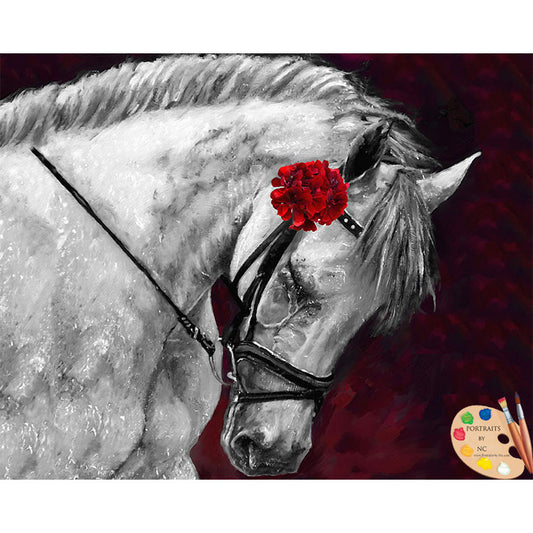An Elegant Chieftain in his Palace by Rudolph Ernst
Share

An Elegant Chieftain in his Palace
Signed 'R. Ernst' (lower left)
Medium: Oil on panel
Size: 22 x 18 in. (55.8 x 45.6 cm.)
Austrian Orientalist
His exceptional mastery lies in his ability to combine layers of genuine artifacts in order to create outstanding fantasy. For instance, details like the 18th Century Ottoman sash tied around the Chieftain's waist juxtaposed with blue and green Moroccan tiles exemplify Ernst's skill in visually cross-referencing the archetypal designs of various regions in order to enhance his compositions. In An Elegant Chieftain in his Palace, Ernst decorates a regal Hispano-Moresque palace interior based on the Alhambra with objects most likely included in his own personal collection (as they were repeatedly included in his Orientalist compositions).
Similar to Lewis and Gerome, Ernst gathered a sizable group of artifacts from his travels to the Middle East such as tiles, lamps, pottery, silks, satins and kaftans. The 17th Century Persian blue and white pot, for example, was also depicted in Un ciseleur and in Outside the Selim Tribe, Constantinople, as well as in The Perfume Makers. Furthermore, the 19th Century Syrian bronze lamp to the right of the Chieftain was depicted in After the Prayer and in The Wedding Day. The red and gold embroidered silk Damask curtain was also used in Smoking the Hookah, and the Moorish octagonal blue and green tiles were illustrated in Reading the Koran. The 19th Century Syrian mother-of-pearl inlaid table placed to the Chieftain's left is also depicted in the Refreshment (Najd Collection). The Alhambra-style background is a favorite setting that Ernst repeatedly returned to in his ambitious compositions such as The Wedding Day as well as The Moorish Guard, The Alhambra.
Source: Artfact
Painting Commissions are Happily Accepted ~ see prices here
Check out my custom painted Old Master Reproductions
 *
* *
*

























































